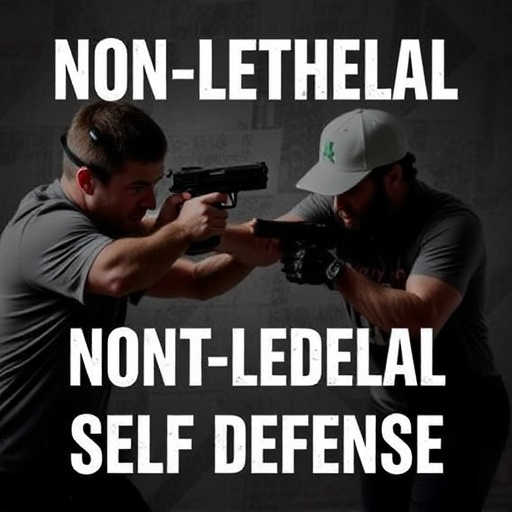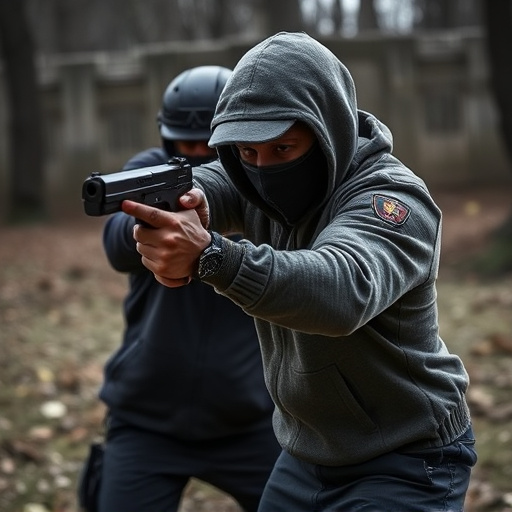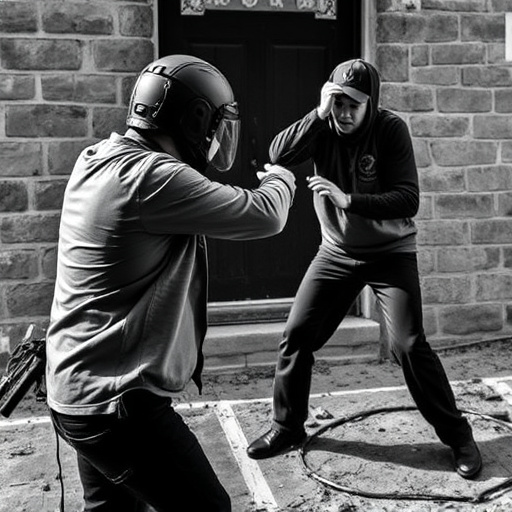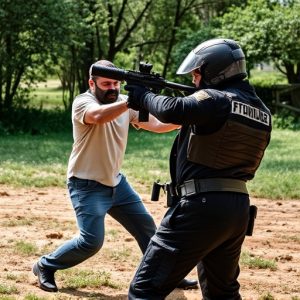Projectile vs Contact Stun Weapons: Effectiveness & Safety Guide
Stun weapons, self-defense tools with projectile or contact mechanisms, differ in operation and main…….
Stun weapons, self-defense tools with projectile or contact mechanisms, differ in operation and maintenance. Projectile stun guns, like tasers, require charging for optimal performance but are non-lethal. Contact stun devices use physical impact and electric currents from direct body contact, needing no charging. Effective and safe use depends on proper charging (as per manufacturer guidelines) and training for accurate, responsible deployment. Understanding these distinctions aids in selecting the ideal self-defense tool tailored to individual needs and situations, with a focus on learning how to charge stun guns correctly.
In the realm of personal safety, stun weapons offer a non-lethal deterrent. This article explores two primary types: projectile and contact stun devices, delving into their distinct features and advantages. We provide a comprehensive guide on ‘how to charge a stun gun properly’, ensuring optimal performance when facing potentially dangerous situations. Through a comparative analysis, we weigh effectiveness and safety considerations, helping users make informed choices while emphasizing responsible ownership.
- Understanding Projectile and Contact Stun Weapons: Key Differences
- Charging a Stun Gun Properly: A Step-by-Step Guide
- Comparative Analysis: Effectiveness and Safety Considerations
Understanding Projectile and Contact Stun Weapons: Key Differences

Stun weapons are a popular choice for self-defense, but they operate through two distinct mechanisms: projectile and contact. Projectile stun weapons, like stun guns or tasers, fire electrical probes or projectiles that disrupt muscle control in the target’s nervous system. The power source charges the device, and when triggered, it releases an electric current, causing temporary incapacitation. Proper charging is crucial; users must follow instructions to ensure optimal performance, including regular maintenance and checking battery levels.
Contact stun weapons, on the other hand, use physical impact to deliver a stun. These include batons or electro-shock belts that make direct contact with the target’s body. The force of the blow or the electric current from the belt overloads sensory inputs, leading to muscle spasms and temporary unconsciousness. Unlike projectile weapons, contact stun devices don’t require charging; they rely on physical force and electrical currents generated during use. Understanding these differences is essential for choosing the right self-defense tool based on specific needs and situations.
Charging a Stun Gun Properly: A Step-by-Step Guide

Stun guns, also known as electronic control devices (ECDs), are powerful tools for self-defense. Proper charging is crucial to ensure their effectiveness and safety. Here’s a step-by-step guide on how to charge a stun gun properly.
1. Prepare Your Stun Gun: Ensure your stun gun is switched off before beginning the charging process. Check the device for any visible signs of damage or wear, and make sure all parts are securely attached.
2. Connect the Charger: Look for the charging port on your stun gun, usually located at the bottom or side. Use the provided charger to connect it to a power source. The charger should be compatible with your specific stun gun model.
3. Initiate Charging: Switch on the charger and allow the stun gun to charge fully. Most manufacturers recommend a charging time of 2-4 hours for optimal performance, but always refer to the device’s user manual for exact specifications.
4. Complete the Cycle: Once fully charged, turn off the charger and disconnect it from the power source. Some stun guns may have a low battery indicator that lights up when the device is partially or fully discharged, helping you monitor its charge level.
5. Regular Maintenance: After each use, clean the stun gun and store it in a cool, dry place with the charger attached for optimal readiness. Regular charging ensures your stun gun remains reliable when you need it most.
Comparative Analysis: Effectiveness and Safety Considerations

In a comparative analysis between projectile and contact stun weapons, understanding their effectiveness and safety considerations is paramount. Stun guns, also known as electroshock weapons, operate by delivering an electric current to incapacitate a target temporarily. The primary advantage lies in their non-lethal nature, making them safer alternatives for self-defense scenarios. However, the effectiveness of a stun gun heavily depends on proper usage, including learning how to charge stun gun properly, ensuring optimal performance when needed.
Projectile stun weapons, such as pepper spray or stun arrows, offer a different approach by creating distance between the user and the target. They can be effective in deterring aggression from a safer distance. Yet, their impact may vary based on environmental factors like wind or the target’s resilience. Safety with projectile weapons is more passive, focusing on responsible handling and storage, whereas contact stun guns demand skill development to ensure accurate and safe deployment during emergencies.
In conclusion, both projectile and contact stun weapons offer unique solutions for personal protection, each with its own advantages and drawbacks. Understanding the key differences and proper usage techniques, such as learning how to charge a stun gun correctly, is essential for making an informed decision. When considering effectiveness and safety, a comprehensive analysis reveals that proper training and responsible use are paramount, regardless of the chosen method. Always prioritize safety and follow best practices when deploying any type of stun weapon.


